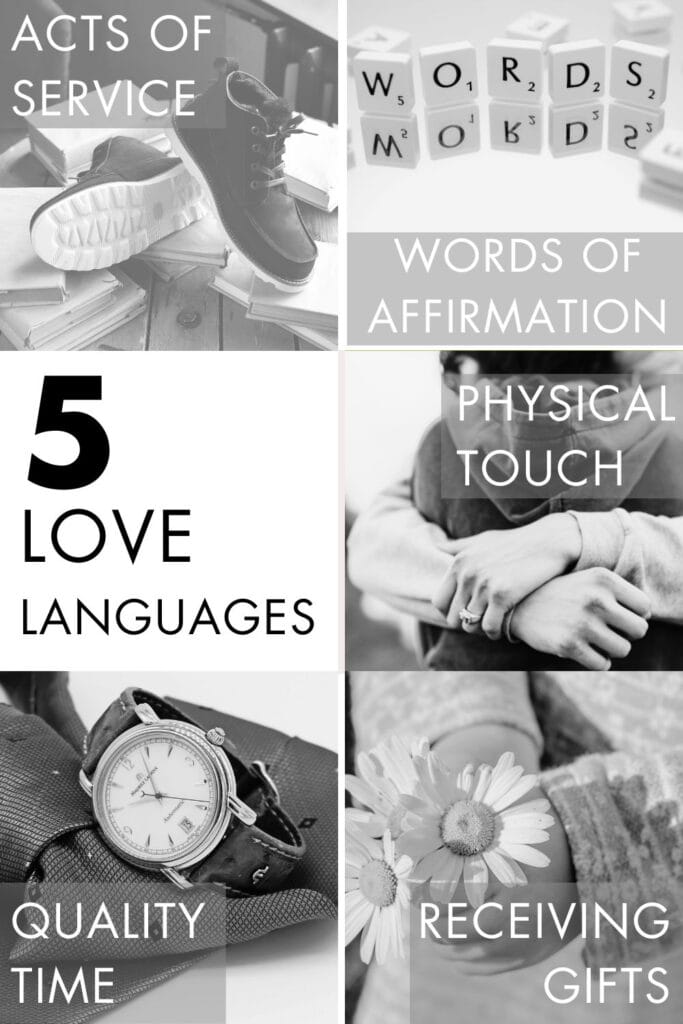You may have heard of Dr Gary Chapman’s book The Five Love Languages. Let’s take a quick look at what those are and why they are important for you to understand as a parent.
Advice for parents, from a parent (not a doctor, counselor or trained professional – just a mother who cares).

My Number one Tip for Parents is…
Know your child’s Love Language
Why do the Love Languages Matter when it comes to Parenting
Every adult, teen, child and baby has a special way of showing their emotions. Whether that be gratitude, appreciation, frustration, fear or joy. It’s the same for Love, we all show it differently.
If you have struck a time with your child where the connection is lacking, there’s lots of meltdowns or even a sense of sadness – it’s very likely that they are feeling a little bit “unloved”. I know as a parent we don’t like hearing that, but it’s not said as a judgement or a condemnation. I say it with intent to bring this revelation…
Everyone needs their bucket filled up!
As adults we are usually better at verbalizing our needs. We let people know if we are feeling hurt, left out, overwhelmed. As parents, it’s our job to let our children (of any age) know that we are their safe place. They are going to be looking to you, the significant person in their life, to fill their emotional bucket for them.
However, everyone is slightly different in how they need that to happen. For some it’s a walk on the beach with you, for others it’s a hug or a card. Some children need you to do something for them or bring them a special treat. It’s these differences we need to understand to successfully fill those emotional buckets.

The Five Love Languages according to Dr Chapman
- Acts of Service
- Quality Time
- Physical Touch
- Words of Affirmation
- Receiving Gifts
It’s likely that each person will be a combination of a few different “languages.” Perhaps it changes over time as they get older. Maybe they are different with family than they are with other people.
It’s most likely, however, there will be one that is more predominant or evident.
This is why it’s important to know what they all are, so you can decide the best way to show your child you love them. Especially if your child is very different to you in the way they show love and care.
Take my family as an example, my predominant love language is Acts of Service – I love to show people I care by doing things for them or helping them with jobs. But if I’m struggling or having a rough day, I don’t want hugs or kind words. In that moment I need someone to help me get stuff done. It makes me feel like they care about me by doing something, an action of some kind.
My son though, whose love language is Words of Affirmation, may try to make me feel better by telling me I’m doing a great job. For him that would be helpful, for me – not so much! If he is having a hard day, he needs me to talk to him. My husband is the same, words carry significant meaning for them.
My daughter, on the other hand doesn’t need words when she is struggling, and she defiantly does not want me cleaning her room! She needs a hug and a flower from the garden.
We all feel loved in different ways, we all need our bucket filled in our own language .

Breaking down the Five Love Languages into parent friendly bites
There are extensive commentaries on the five love languages and what they entail. However, as a busy parent I believe there is a real need for a ‘quick summary’ to get us out of a ‘tight spot’ – so to speak. Therefore, let me give you a quick breakdown or introduction of the Five Love Languages and what you need to remember with regards to your children.
- Acts of Service = ACTIONS – show love by doing something for them
- Quality Time = ATTENTION – show love by being present and engaged
- Physical Touch = CONTACT – show love by being close, hugging, holding hands
- Words of Affirmation = SAY – show love by speaking encouraging words
- Receiving Gifts = GIVE – show love through things, remember sentimental not expensive
If you are struggling to know which one your child is – I have a question you can ask them… just remember to ask them when they are feeling happy or content. (Asking when they are already upset won’t give you an accurate answer.) The question is….
“What do I do that makes you feel the most loved?“
Remember, they may say things that are more than one language. For example, “I love it when you hug me and bake me cookies.” This is normal, especially for younger children. But from that answer you can assume they are ‘Physical Touch’ and ‘Acts of Service’. Or they may say, “I love it when you play basketball with me.” This indicates it’s all about “Quality Time” for them. This question is just a starting place.
Over the next few weeks, I’m going to do a more extensive look into each Love Language and how to recognize them (in underlined above), but for now I hope this bite size snippet helps you find a way to connect to your loved ones by “speaking” to them in the language they understand best – their Love Language.
Are you on Pinterest? Save this article for later:






